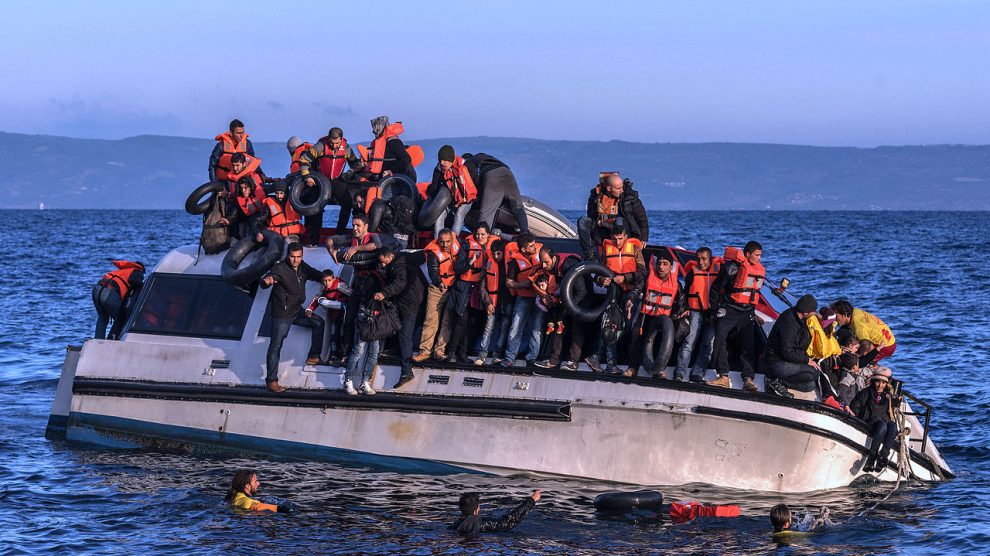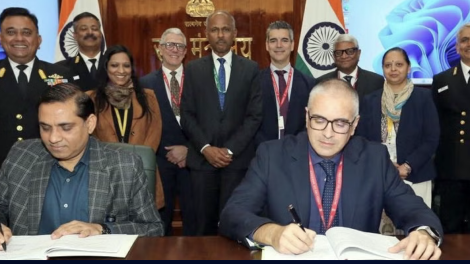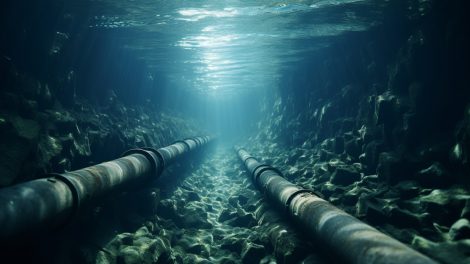EU bracing for growing migrant influx. As the weather gets colder and Russian missiles keep hitting Ukraine’s critical energy and water infrastructure, European member States are readying to repeat and expand that same effort despite the energy and cost-of-living crises.
- 4.4 million Ukrainians applied for temporary protection in the EU between January and September 2022. Some of them returned after Kyiv repelled Moscow’s initial attack, but might be forced to travel back to the bloc in view of the harsh winter awaiting them.
- Meanwhile, Europeans also witnessed the highest influx of new arrivals from North Africa, the Middle East and Asia since the migration crisis in 2015-16, which strained their reception practices and tested the political unity of the bloc.
Russia: the common denominator. Beyond displacing millions of Ukrainians by force of missiles, the Kremlin’s also a driving force behind the emigration waves from the MENA areas by virtue of two key hybrid war levers: hunger and instability.
- Knock-on effects of the war included a months-long spike in grain prices, which Russian President Vladimir Putin worsened by withholding Ukrainian grain – essential for many of these countries – before entering a Turkey-brokered export agreement.
- Research by the UN Development Program shows that a key drivers of radicalisation and support for terrorist groups are human rights violations perpetrated by the State, or state-associated, actors – some of whom, like Mali, have become increasingly reliant on the Wasgner Group, a well-known Russian mercenary outfit.
- This results in longer-term insecurity, which fuels underdevelopment, corruption, climate crises, terrorism, and, ultimately, mass migration.
Italy’s position… As a first-reception country for northbound refugees, Italy has been at the issue’s forefront – as 100,000 are projected to land on its shores in 2022, compared to 2020’s 25,000. The security challenges on NATO’s Southern border are a longstanding Italian concern, and Giorgia Meloni’s right-wing government has sought to raise the issue in Europe and within NATO.
- “We need more Europe on the Southern front, […] because we cannot manage by ourselves a flow that has now assumed unmanageable dimensions,” said PM Meloni at the Rome Med Conference, calling for an urgent “framework of multilateral cooperation based on legal flows and incisive action to prevent and combat irregular flows, which must also include an indispensable element, the Europeanisation of repatriation management.”
- Although the EU Commission presented a new mechanism for redistribution, it remains voluntary – meaning, as it has done in the past, member States have a wide opening to avoid the issue. This, in turn, is likely to test the country’s already-burdened reception system and put a strain on its internal stability, then to be exploited by the Kremlin’s infowar.
… and NATO’s response. When he met with Italian PM Meloni, NATO’s Secretary-General Jens Stoltenberg assured her the Alliance would maintain its focus on its Southern frontier. The Secretary-General noted that the Alliance is “vigilant” to “the challenges coming from the south […] with our operation Sea Guardian we regularly patrol in the Mediterranean,” he added, referring to the mission to counter illegal immigration in the Aegean Sea.
- NATO is also on the verge of establishing its Southern Maritime Command in Taranto, making the Southern Italian city its main lookout over the wider Mediterranean area.
- Nevertheless, the lack of European support might still spell troubles for Italy’s stability – and thus that of the wider Western front.





